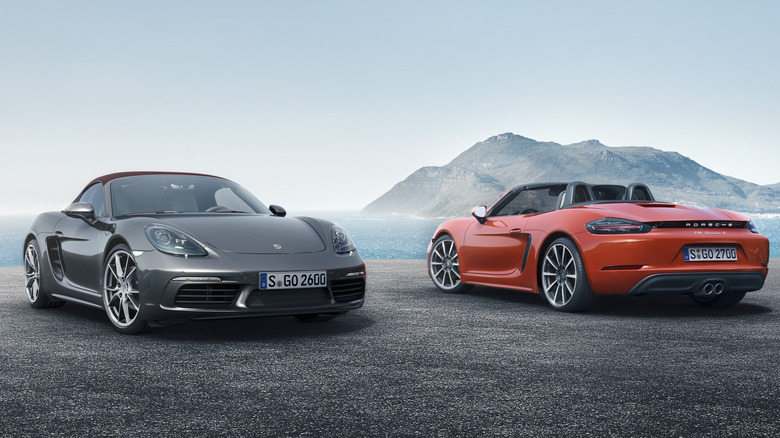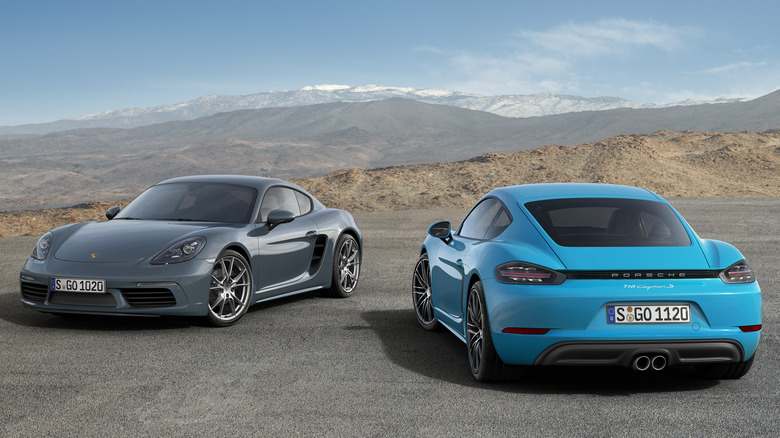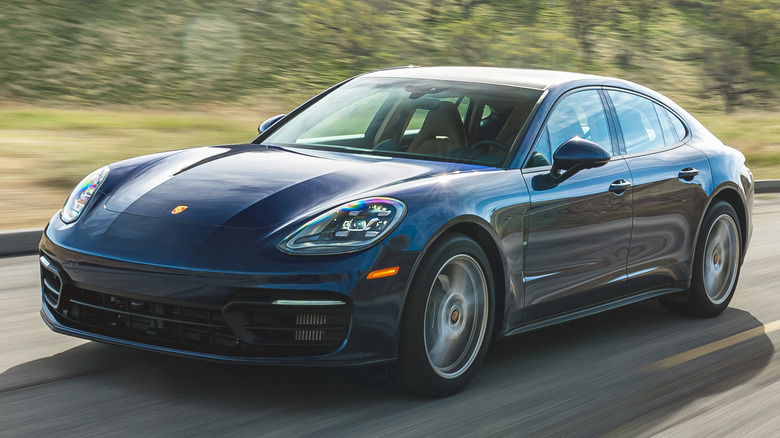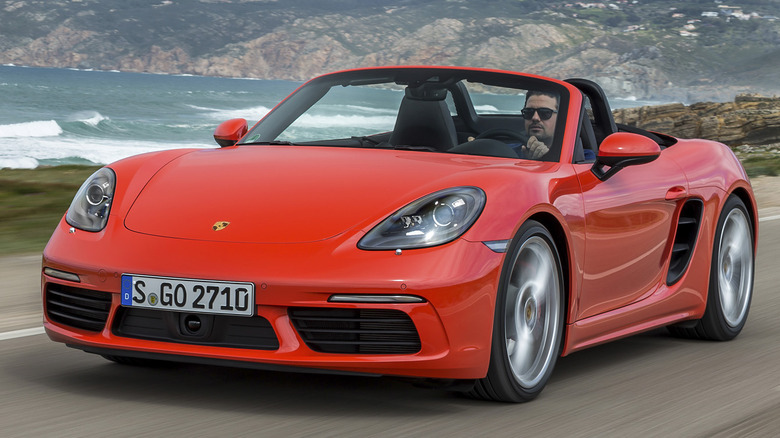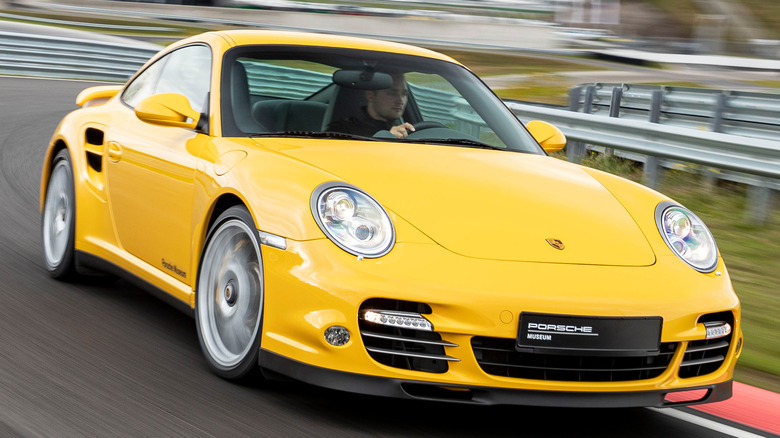4 Affordable Porsches That Are Future Classics
The idea of a "cheap" Porsche seems to be a distant memory. There was a time, in the recent-ish past, when you could easily find an old 911 that just needed some care and attention for less than $10,000. Models outside the 911 family were so cheap they were basically free. The downside, at the time, was repair and refurbishment costs. Porsche parts aren't cheap now, and they weren't cheap then, but if you were prepared to put the work in you could have a wonderful vintage Porsche in your garage for a fraction of today's inflated prices.
Still, there are some relative bargains to be found when it comes to vintage Porsches, particularly these models you can buy on a budget. The less prestigious stuff, the sub-911 models, saloons, and even a full-blown 911 that was built after the company ditched air cooling are all available at a more reasonable price than a 944, or 968, and most certainly a 930. These vehicles also tick the pre-classic boxes.
The 911 we mention is going to be a classic by default — it's a 911 — and the others have things in common with older Porsches that may have been seen as lesser vehicles in their day, but became highly desirable in their own right a few decades on. Here are four Porsches that are still somewhat affordable and may well be considered classics in a few years time if you want to take that gamble.
Porsche Cayman
Not everyone can afford a 911 like the Carrera T we reviewed, and some people's budgets go beyond the Boxster. This is where the Cayman is supposed to fit in: it's the middle ground. A performance-focused Porsche for people who can't quite justify the company's flagship vehicle, but still have a considerable fun-money budget. A used Cayman is also pretty affordable as far as Porsches go.
In terms of becoming a classic, if the likes of the 944 and 968 made it into that category, there's no reason why the Cayman would be excluded. It's arguably better than the 911 in some instances, too, and can be found for around $15,000 if you look hard enough — though examples coming in at $20,000 seem to be more common. The basic Cayman S had an MSRP of just under $60,000 if we're using the 2008 model as an example, and despite inflation running rampant the vehicle's MSRP is only around $10,000 higher 16-years on.
So at $15,000, it's probably done all of the depreciation it will ever do. Given time, the Cayman may become highly desirable and that price could go the other way — and even if it doesn't, if you take the absolute worst case scenario from a collectability standpoint, you're still stuck with one of the best-driving and best-performing Porsches ever produced.
Porsche Panamera
When you think classic Porsche, you're probably not picturing something with four doors like the Panamera prototype we took for a spin in 2023. That's because the company has spent most of its life producing two-doored sports cars. However, there's no reason the Panamera, a full-sized saloon car Porsche debuted back in 2009, can't eventually become a classic. Innovative things with a Porsche badge on the front tend to get looked upon favorably as time passes, and there are plenty of four-door classics out there.
A used Panamera can be had for as little as $20,000, and you won't be getting a slouch for that money. Standard early Panameras tend to pack 400 horsepower, while a Turbo can produce 500 if you manage to get your hands on one. Find a decent stretch of road, or hit a track, and you'll have a fast, enjoyable performance vehicle. But the Panamera is more than that. A classic 911 is far from a daily driver, and will be impractical in many circumstances. A Panamera is something you can drop the kids off at school in, or take to pick up your groceries. It's a full-sized saloon car, and has all of those benefits on top of its performance levels.
The same arguments could also apply to Porsche's SUVs, the Cayenne and Macan, though the jury may be out on whether they'll be considered classics at any point. Classic SUVs tend to be heavily distinctive and very rugged — think an early Land Rover or G-Wagon. Porsche's other utility vehicles may just be too practical and "everyday" for classic status in the long run. But as unconventional Porsches go, the Panamera is a far safer bet.
Porsche Boxster
In the mid-1990s, the Porsche Boxster replaced the 968 as Porsche's entry level offering. Although there are people that deride the Boxster for a number of reasons, the main one being it isn't a 911 and regular people can afford one, there are signs that it is becoming as much of a classic as many of its non-911 ancestors. So if you find yourself smiling at the likes of a 924, 928, 944, 968, et al., then a Boxster is the logical next step down the line ... and you can buy one while they're still sort of cheap.
The pricing may be the biggest tragedy on this list, as a Boxster will currently set you back around $25,000. There was a time in recent history when a used Boxster in reasonable condition could be had for as little as $5,000 — but it's 2024 and life is no longer fair.
So why will the Boxster become a classic? While its predecessors had some level of compromise that took them away from Porsche purity, be that a front-mounted engine, or water cooling, or questionable looks, the Boxster is pretty true to the 911 of its time and early examples overlap with the 996 quite considerably. It's a good-looking, rear-engined, two-seat roadster, and it's plenty of fun once you hit the road with it. Yes, it is water-cooled, but it spawned at a time when Porsche was water cooling everything, so it's always going to be. Shop around for long enough, and you may find one for close to $10,000 still if you're lucky enough. That price is only going to go higher once nostalgia starts kicking in.
Porsche 997 Carrera
Despite the fact it probably saved Porsche from bankruptcy, there was a lot wrong with the 996. The number of parts it shared with the cheaper Boxster, the IMS bearing issue that could potentially write the car off, and those hideous headlights are just a few ways the German manufacturer missed the mark with the late 90s incarnation of the 911. But a lot of those issues were fixed with the 997, and a 997 is almost as cheap as a 996.
So if you want to get a 911 in your garage, and you want to enjoy a modern Porsche driving experience, a 997 is a pretty obvious choice. It's water-cooled, so hasn't been hit by the oddly inflated prices that air cooled models are experiencing in recent years. It will also outperform those older models quite handily. The first 997 rolled off the production line in 2004, so they're a few years away from hitting classic territory in terms of age. But this is likely going to be one of the 911s people look back on very fondly once the air-cooled snobbery section of the Porsche community turns down a touch.
It is worth noting that the IMS bearing issue that plagued the 996 was also present in the 997.1. In light of that, when you're looking to buy a 997, either get a 997.2 (post-2009) or thoroughly check the paperwork and make sure the IMS bearing has been swapped out in that car. There is a line of thinking that suggests an IMS bearing that is prone to failure would have failed over the course of 20 years, but is it really worth the risk?
